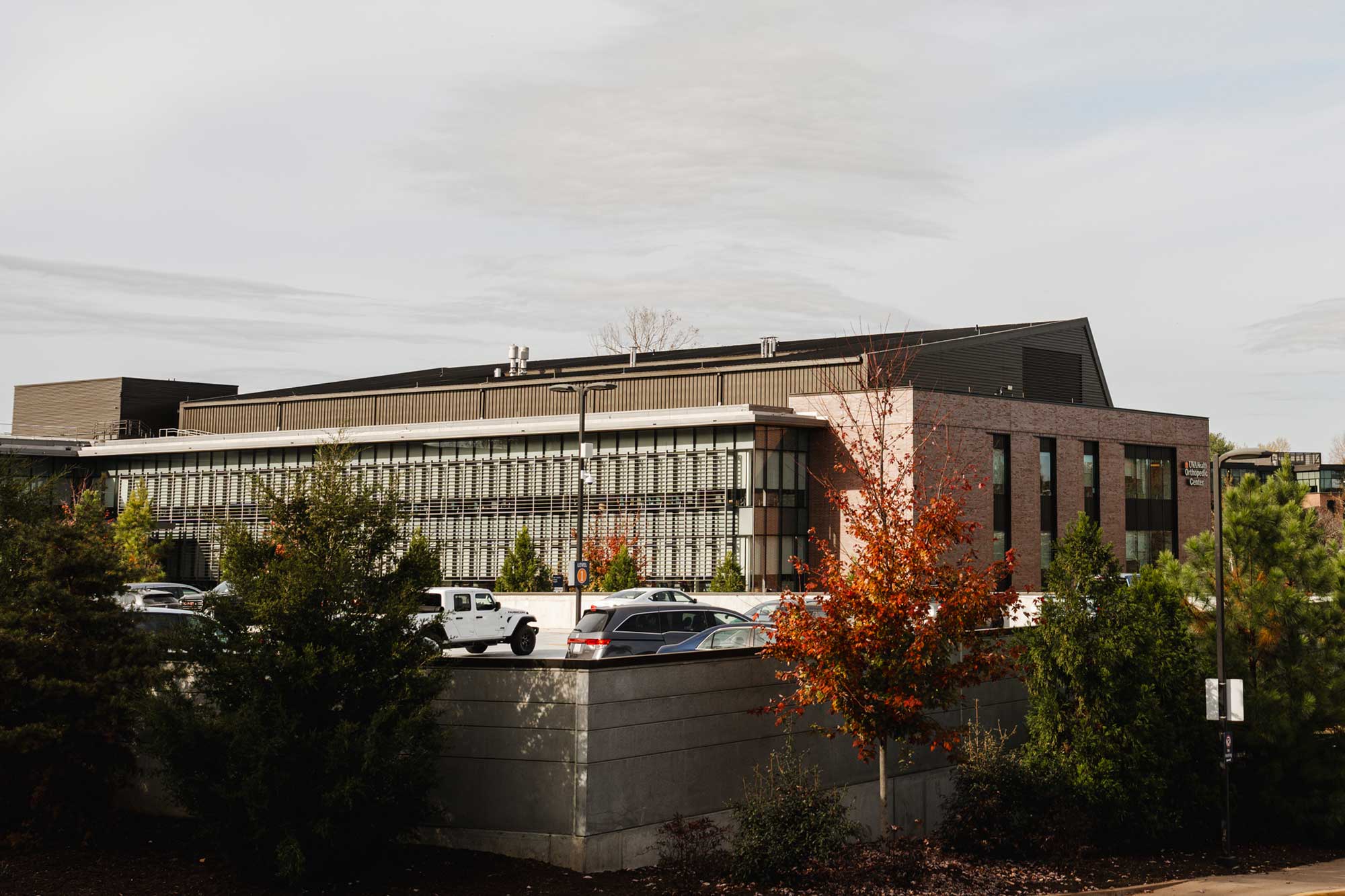The University of Virginia has about 550 buildings, from the 19th-century UNESCO World Heritage Site that is the Academical Village to newly constructed, energy-efficient tech centers with solar panels atop and geoexchange systems below.
Since 2007, UVA has required major construction and renovation projects to be certified “green” through the Leadership in Energy and Environmental Design, or LEED, program operated by the U.S. Green Building Council. And in addition to LEED, UVA’s award-winning Green Building Standards require new construction and renovations to meet energy targets and other process-oriented and prescriptive requirements aligned with UVA’s sustainability goals.
But sometimes the green cannot be readily seen, which has some Hoos wondering why the new UVA Orthopedics Center on Ivy Road does not have solar panels. UVA Today reached out to University building officials for the scoop.

The center has a variety of energy-saving features, such as high-performance heating, ventilation and air conditioning systems designed to reduce energy consumption; automated LED lighting; smart sensors and automated building controls; high-efficiency motors; and energy recovery systems. (Photo by Emily Faith Morgan, University Communications)
It turns out that the center was the first building to be designed and built to comply with UVA’s updated Green Building Standards, according to Jesse Warren, associate director for sustainability in UVA’s Office for Sustainability.
“UVA’s Green Building Standards require all buildings to be ‘solar ready’. The building was structurally and electrically designed to be solar-ready and has the ability to accept solar panels on the south-facing roof as well as the top of a proposed canopy on the nearby parking deck at a later date,” Warren said.
Generally, UVA is looking to strategically add solar panels to rooftops, but other strategies, such as building efficiency strategies coupled with increased efficiency on the district energy or utility scale, can sometimes have much more impact. And a lack of solar panels on top doesn’t mean the rest of the building, designed by ZGF Architects LLP, isn’t efficient.
Sathish Anabathula, associate director of power and light at Energy and Utilities in Facilities Management, said each project considers rooftop solar panels, but sometimes the project designers pursue other energy-efficient and sustainable strategies that have a better payback or deeper carbon reductions.
Among these other elements, the building has high-performance heating, ventilation and air conditioning systems designed to reduce energy consumption by 17% compared to other outpatient facilities. The building systems include automated LED lighting, smart sensors and automated building controls, high-efficiency motors and energy recovery systems.
The building is even connected to a state-of-the-art district energy facility that reduces fossil fuel consumption and the associated emissions by 80% by using heat recovery chillers, Warren said.










